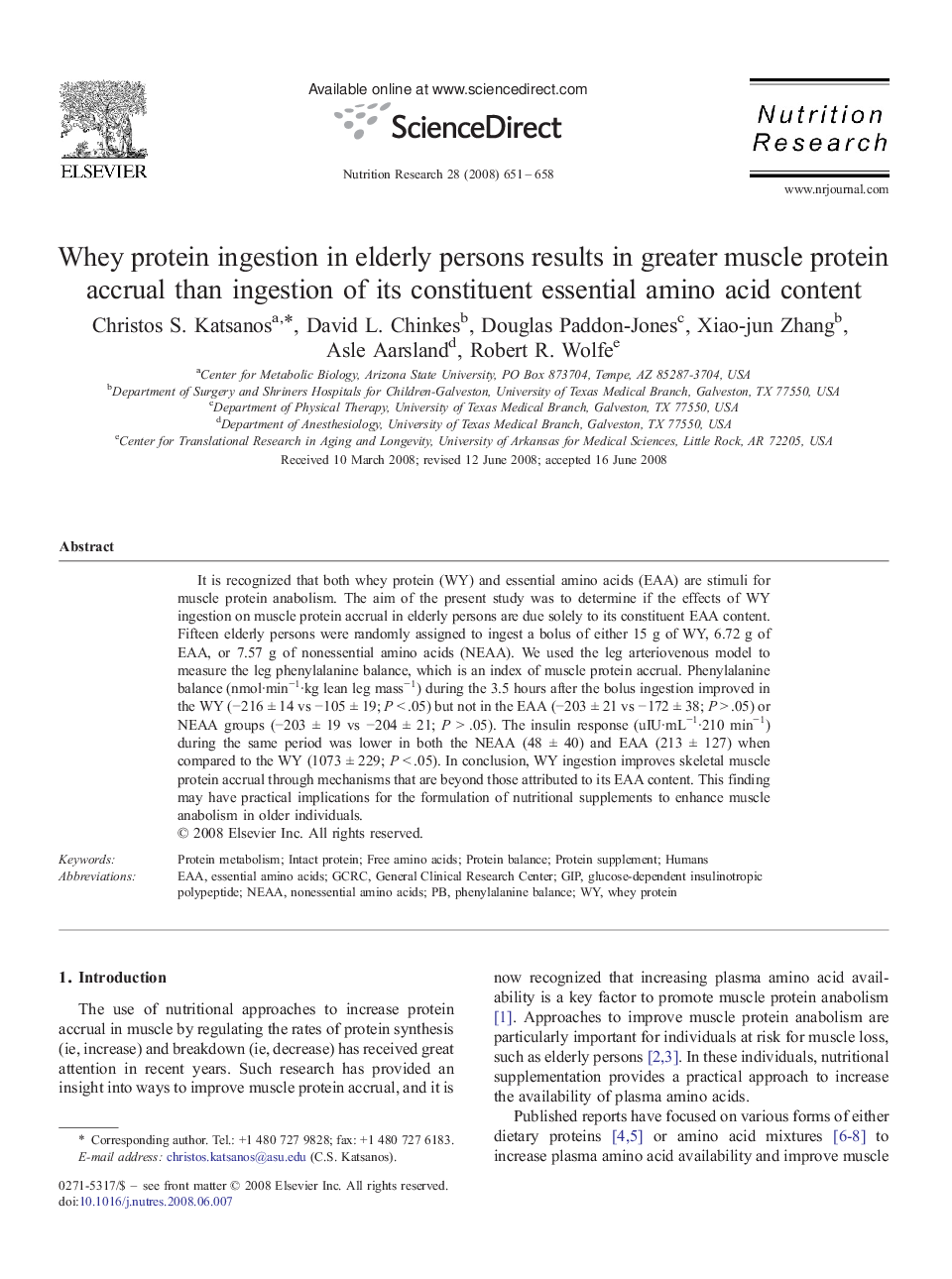| Article ID | Journal | Published Year | Pages | File Type |
|---|---|---|---|---|
| 2809608 | Nutrition Research | 2008 | 8 Pages |
It is recognized that both whey protein (WY) and essential amino acids (EAA) are stimuli for muscle protein anabolism. The aim of the present study was to determine if the effects of WY ingestion on muscle protein accrual in elderly persons are due solely to its constituent EAA content. Fifteen elderly persons were randomly assigned to ingest a bolus of either 15 g of WY, 6.72 g of EAA, or 7.57 g of nonessential amino acids (NEAA). We used the leg arteriovenous model to measure the leg phenylalanine balance, which is an index of muscle protein accrual. Phenylalanine balance (nmol∙min−1∙kg lean leg mass−1) during the 3.5 hours after the bolus ingestion improved in the WY (−216 ± 14 vs −105 ± 19; P < .05) but not in the EAA (−203 ± 21 vs −172 ± 38; P > .05) or NEAA groups (−203 ± 19 vs −204 ± 21; P > .05). The insulin response (uIU∙mL−1∙210 min−1) during the same period was lower in both the NEAA (48 ± 40) and EAA (213 ± 127) when compared to the WY (1073 ± 229; P < .05). In conclusion, WY ingestion improves skeletal muscle protein accrual through mechanisms that are beyond those attributed to its EAA content. This finding may have practical implications for the formulation of nutritional supplements to enhance muscle anabolism in older individuals.
